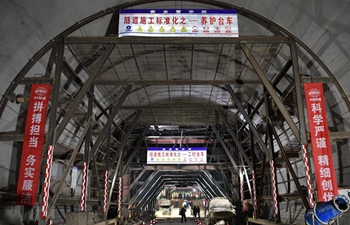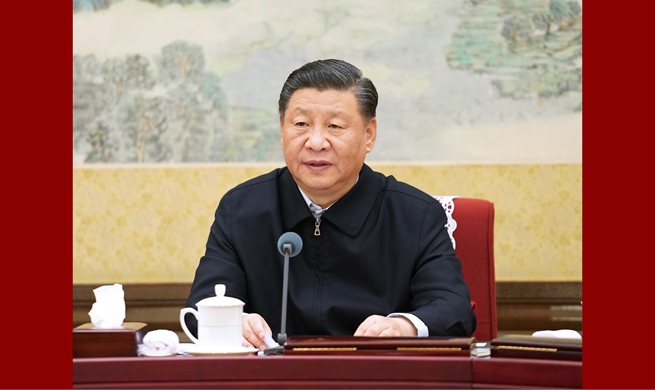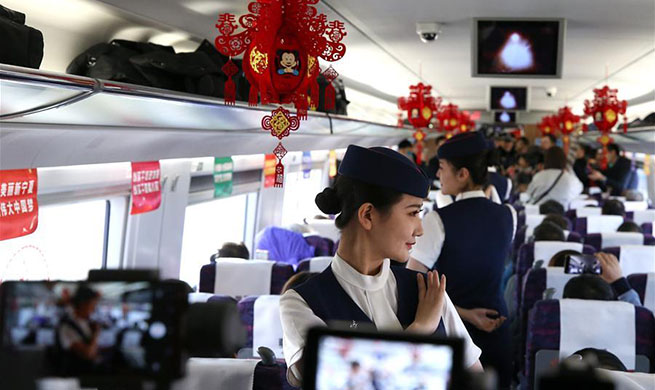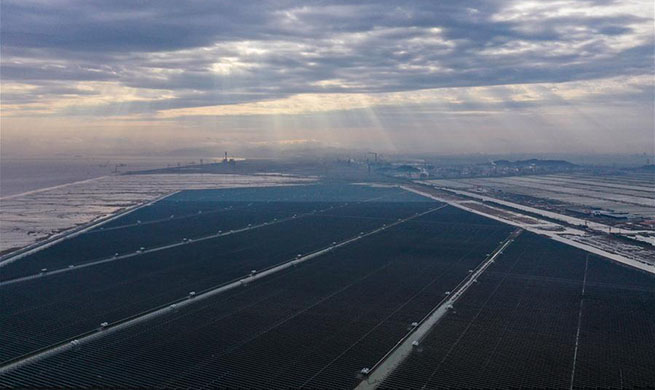BEIJING, Dec. 29 (Xinhua) -- Having been in the gray fabric business for eight years, Wu Lizhong knows all too well that market fluctuations are the norm, but the past year was especially hard.
"Our orders from the European Union and the United States dropped by 10 to 20 percent," Wu noted.
Despite pressures from economic headwinds and trade tensions, his shop in the textile hub Shaoxing of east China's Zhejiang province has survived, thanks in part to China's across-the-board tax reductions, a key fiscal policy to boost growth.
In 2018, Wu paid more than 30,000 yuan (about 4,228 U.S. dollars) in taxes, but this year he paid none, which offered timely relief and enabled him to overcome the difficulties.
Across the country, millions of small and micro businesses like Wu's have benefited from the largest tax and fee cuts in years.
In the first three quarters, the new tax breaks saved small and micro firms 182.7 billion yuan.
"The extensive tax breaks targeting small and micro businesses covered more than 95 percent of taxpaying entities, among which 98 percent are in the private sector," said Jing Tingru, professor at Anhui University of Finance & Economics.
Beyond small businesses, society as a whole is sharing the dividends.
Data from the Ministry of Finance showed the massive tax and fee cut measures saved enterprises and individuals nearly 1.97 trillion yuan in the first 10 months of the year.
Total tax and fee cuts for the year are expected to reach 2 trillion yuan, accounting for over 2 percent of GDP, according to Finance Minister Liu Kun.
For more ambitious companies like Guangzhou Liby Enterprise Group Company Ltd., the tax reductions gave them the courage and confidence to spend more on R&D and innovation for future growth.
In 2019, tax reductions enjoyed by the whole group are expected to surpass 100 million yuan, according to Tan Tian, vice president of the group, which manufactures and sells daily chemical products including laundry powder and dishwashing liquids.
"The funds unleashed supported our brand upgrading and product research, which further boosted our confidence to enhance R&D," Tan said.
A survey by the National Bureau of Statistics showed more than 70 percent of the tax reductions had been used in R&D, technology upgrading and investment.
Meanwhile, reforms in individual income tax eased burdens on employees by more than 10 million yuan, offering strong support for the company's strategy of attracting and keeping skilled workers, said Chen Shanli, deputy director of the human resources department of Liby.
The massive tax cuts have not only fostered growth momentum for businesses, but also enabled the broader economy to upgrade and transform on the path toward high-quality development, noted Bai Jingming, vice president of the Chinese Academy of Fiscal Sciences.
Easing burdens allowed businesses to focus more on research and development and higher disposable incomes helped spur consumption growth, all key to China's ongoing economic transformation.
Chinese authorities estimated that the extensive tax and fee reductions are likely to drive GDP growth by 0.8 percentage points, fixed asset investments by 0.5 percentage points and retail sales by 1.1 percentage points.
Yang Zhiyong, a researcher with the Chinese Academy of Social Sciences said the policy effect will continue to filter through in the coming year to invigorate the economy.
But on the other hand, the steep tax cuts will bring challenges to China's fiscal balance, which requires the government to further optimize its fiscal structure to ensure the solid implementation of the policies, Yang added.

















